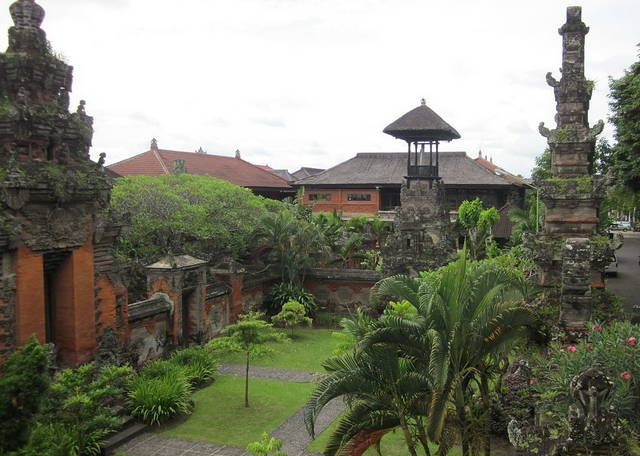Bali Museum officially called Museum Negeri Propinsi Bali (or Museum Negeri Provinsi Bali), and when you step inside and boom, you’re time traveling. Ancient tools, Weird ceremonial stuff you can’t pronounce. The museum’s been around since 1932, which means it’s basically a historical artifact itself. So, dont miss it during your tourism in Indonesia.
The place is split into these old-school pavilions, each jammed with over 10,000 things—prehistoric stone tools, religious statues, fancy musical instruments, you name it. You get a real taste of that wild Balinese mashup: Hindu vibes, old animist magic, and just insane creativity everywhere you look. Tourists dig it as well as it’s one of the most famous museums in Bali because it isn’t all polished and commercial like some other art galleries.
Where Is Museum Negeri Propinsi Bali?
Here’s the scoop: Museum Negeri Propinsi Bali? Smack dab in Denpasar—the big city vibes of Bali. You’ll find it hanging right next to Puputan Badung Square (which is basically the go-to park for anyone trying to soak up some local history), and it’s literally staring down the Jagatnatha Temple across the way.
Flying in to Ngurah Rai Airport? You’re looking at, what, 14 kilometers or so? So, maybe a half-hour-ish cab ride, unless the traffic gods are feeling particularly cruel. The best part? You’re in the heart of everything. Super easy to swing by if you’re bouncing around Denpasar or just cramming as much culture as possible into one day.
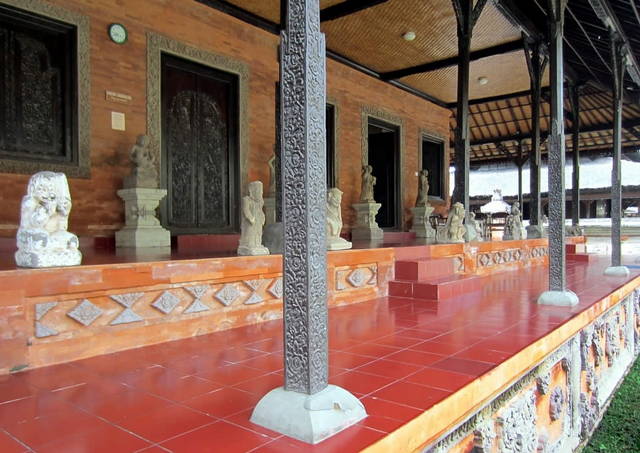
Available Features and Facilities
Actually, they keep the place in good shape, but it’s not one of those “don’t touch anything” museums.
- Four main pavilions
- Tabanan Pavilion: If you’re into old-school stuff—like, really old—this is where you’ll find prehistoric bits and weirdly fascinating ethnographic knick-knacks.
- Karangasem Pavilion: All about the spiritual side—think ceremonial bling and religious relics.
- Buleleng Pavilion: Here’s where the artsy crowd hangs, with loads of sculptures and paintings.
- Timur Pavilion: For the textile nerds and music lovers, they’ve got wild Balinese fabrics and some pretty cool instruments.
- All the info panels are in both English and Indonesian.
- If you’re the type who likes stories behind the stuff, grab a guided tour.
- There are these lush gardens and shady courtyards where you can chill out.
- A couple of souvenir shops are tucked around, so you can snag some local crafts.
Best Things to Do at Museum Negeri Propinsi Bali
If you roll up to the Bali Museum, it’s not just a boring “look at stuff behind glass” kind of day. There’s way more going on.
- You’ve got these old-school artifacts—think ancient tools, gnarly bronze statues, and all kinds of ritual knickknacks from way back when Bali was all about prehistoric vibes and the whole Hindu-Buddhist thing.
- If you’re into fashion (or, you know, just love a good fabric), check out the costume and textile section. The Balinese have ceremonial outfits, and their weaving game is next level.
- Sometimes you get lucky and catch a live show—yep, real dancers busting out traditional moves or a gamelan band doing their thing.
- The building itself. The architecture is seriously photogenic—stone carvings everywhere, those classic temple gates, chill courtyards.
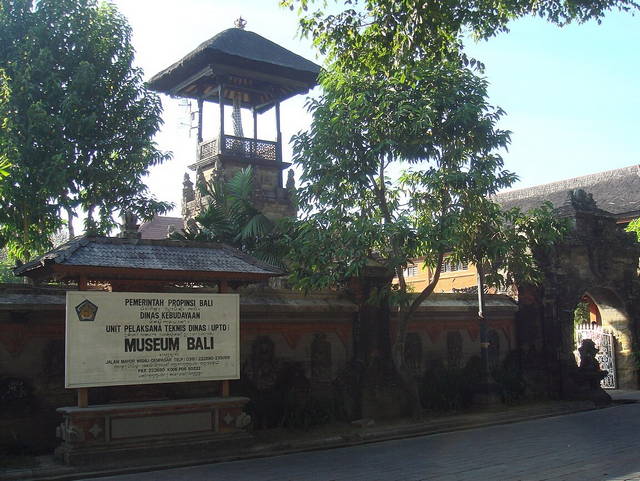
The Opening Hours of the Museum Negeri Propinsi Bali
- The museum opens Monday through Friday, 8 to 3:30.
- On weekends, they’re only up for it till 12:30 PM.
- Public holidays? they’re shut, check before you roll up during the holidays.
Where to Stay near Museum Negeri Propinsi Bali
If you’re museum-hopping and need a crash pad nearby, I’ve got three solid picks:
Inna Bali Heritage Hotel
This place is basically a time machine. Picture old-school vibes—like. But don’t worry, you still get Wi-Fi and hot showers. Best part? It’s literally right around the corner from the museum.
Mahatma Residence
Not too fancy, not too basic—right in the Goldilocks zone. They’ve got a rooftop lounge that’s perfect for pretending you’re classier than you actually are, and if you’re on a work trip, there’s enough “businessy” stuff to keep your boss happy. It’s just a quick 5-minute drive.
Oranjje Hotel
Ballin’ on a budget? This one’s for you. Think tropical gardens, all the Balinese decorations, and a price tag that won’t make your wallet cry. It’s about 10 minutes away by car, but hey, that gives you time to mentally prepare for all the culture you’re about to absorb.
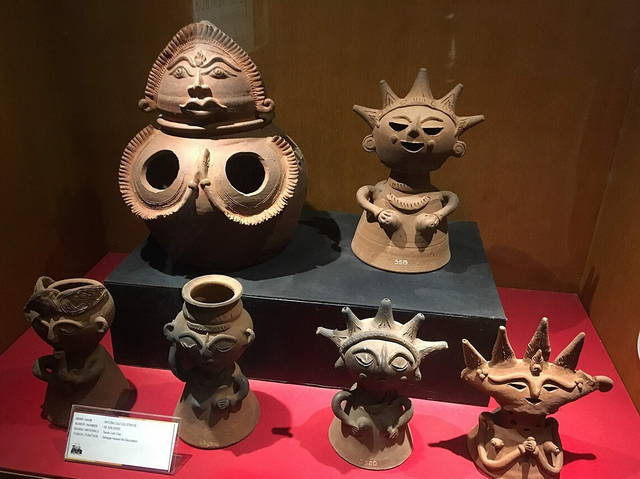
Dining Around Museum Negeri Propinsi Bali
If you’re kicking around near the Museum Negeri Propinsi Bali and your stomach starts grumbling, you’re in luck—food’s basically everywhere, including:
- Warung Wardani. Locals swear by their Balinese rice plates and satay—seriously, you’ll catch people lining up for it.
- Bebek Tepi Sawah. Their crispy duck is legendary. Plus, the vibe’s kinda chic without being snooty.
- Bali Bakery. It’s got all the Western comfort stuff—think pastries, sandwiches, and coffee. Perfect if you need a break from spicy sambal.
The Top Four Bali Museum’s Nearby Attractions
Jagatnatha Temple
If you’re into temples, this one’s a stunner. It’s dedicated to the big boss, Sang Hyang Widhi Wasa, and it’s literally right next to the museum.
Puputan Badung Square
It’s a park, but not just any park. This spot’s all about remembering the Balinese fight against colonialism. Good for a stroll, a breather.
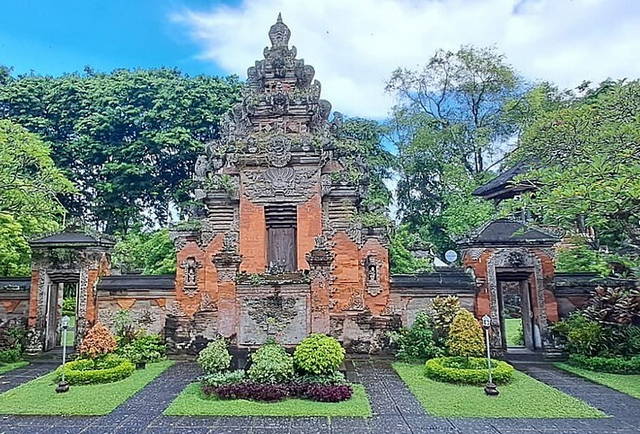
Bali Arts Center (Taman Budaya Bali)
Art nerds, listen up. This place is kind of the go-to for performances and artsy stuff in Bali. Only takes like ten minutes to get here from the museum.
Bajra Sandhi Monument
You’ll find this striking monument over in Renon. It’s got drama, history, and a whole lotta pride.
In Fact,
You can’t really call yourself a Bali traveler if you haven’t wandered through the Museum Negeri Propinsi Bali. This place? It’s like the island’s memory bank, stuffed with everything from ancient relics to those wild ceremonial getups you see in parades. It’s not just about pretty things to look at; it’s about soaking up the vibes and stories that make Bali.
Museum negeri provinsi bali is your jam. Dead center in town, easy to find, no weird labyrinths to navigate. Plus, there’s this real sense that you’re standing somewhere important—like you’re in the middle of a living, breathing culture, not just peeking at it from the outside.

